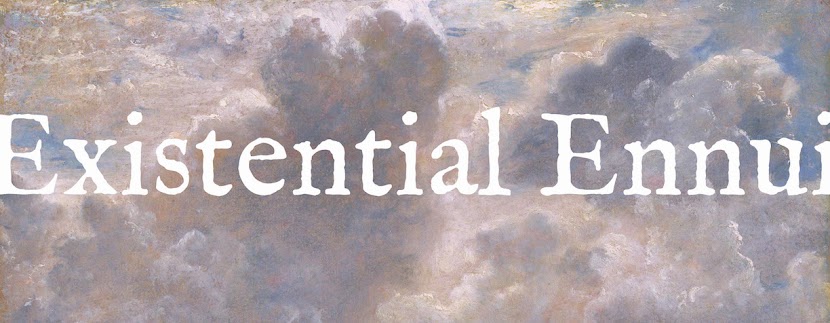Before we get stuck into the meat of this post, i.e. how Elmore "Dutch" Leonard's intended sequel to his 1983 novel Stick (itself a kind-of-sequel to Swag, 1976) morphed instead into his subsequent novel LaBrava (also 1983), an illustration, dear reader, if you'll indulge me, of the madness of book collecting. Well, my book collecting, anyway...
A couple of months ago I bought a 1983 Arbor House US first edition of Stick, one of my favourite Elmore Leonard novels (part of a job lot of Leonard books purchased from Brighton book dealer Alan White) – a perfectly (near) fine copy thereof, and actually quite a nice, very
reasonably priced find for someone living in the UK (where American
editions aren't always easy to come by). Good enough, in other words,
for any sane book collector.
Cut to a few weeks ago, and having (re)read and reviewed Stick and acquired (and reviewed) LaBrava in a signed Viking UK first edition,
I was browsing AbeBooks and the like for other interesting Elmore
Leonard books bearing his John Hancock and spotted a relatively
inexpensive signed copy of Stick for sale, from a British seller.
It wasn't clear which edition the book was, but my strong suspicion was
that it was the British first edition, published by Allen Lane in 1984.
Figuring it would make for a nice companion to LaBrava, I made some enquiries and established that it was indeed the Allen edition:
which, although the dust jacket is not dissimilar to the US Arbor one (it uses the same Antler & Baldwin logo, except with a different typographic treatment – and different blurb), is pretty uncommon in and of itself. But especially so signed:
(on the title page, which, unlike the US edition, repeats the cover logo), this copy being the only one I've come across.
Obviously that's no excuse for buying the same novel twice, but it's not like it's the first time I've done that (stand up, Donald "Richard Stark" Westlake and his Parker novels), and its acquisition does at least afford me the opportunity to return to the article by Elmore Leonard's researcher, Gregg Sutter, in the Winter 1986 edition of The Armchair Detective, and the relationship between Stick and LaBrava. The genesis of Stick is interesting enough (apparently Leonard was inspired to write the novel as a result of checking his calendar and realising that "Stick was due to get out of Jackson State Penitentiary after doing seven years for armed robbery" – which nobody but Leonard would have known since the last time Stick had been seen, at the end of Swag, he'd only just been arrested), and there's some intriguing background on Sutter's work on the book (having to research how to break into a car, for example). But things get really interesting when Sutter turns to LaBrava:
At first, the book which [Leonard would] eventually call LaBrava was going to be a sequel to Stick. This time, Stick would go to work for a private eye who would hire him to keep an eye on a female rock singer who then hires Stick as her bodyguard. Dutch focused on Patti Smith, the eerie punk chanteuse of the middle '70s as a model for this singer and named her Moon. But as quickly as the idea was born it was cast aside. Next Stick was going to be a photographer who had taken some award-winning photos of Indians in the Southwest after leaving in haste from Barry [Stam]'s place in Stick. His studio is destroyed in a fire, and he goes back and tries to re-create it...
Then, Stick the character got summarily dumped from the story. The book Stick had just been sold to Universal and Dutch wanted to avoid the hassle he'd had with Split Images where he'd had to change Raymond Cruz's name to Bryan Hurd and lighten his moustache because United Artists had the name Raymond Cruz locked up for five years, making a movie deal difficult if not impossible.
The names weren't right anyway. To Dutch, getting the names of characters right is akin to getting the character right.
The passage is quite illuminating as regards Elmore Leonard's writing process and the way a book changes from conception to completion – the road not taken, if you will – but there are a couple of other noteworthy bits besides. Firstly, in the event, elements of Leonard's original ideas for the Stick sequel did make it into LaBrava: Joe LaBrava is a photographer; his mentor, Maurice Zola, took some award-winning shots; and the notion of Stick looking after a female rock singer evolved into LaBrava looking after a Hollywood starlet. But there's also the business about the movie rights to Stick being sold. Leonard stated in his intro to the 1989 Armchair Detective Library edition of The Big Bounce that "each time you sell a film rights to a studio,
they own the character for a specified number of years. So I change
the names." That's probably the chief reason why the Stick sequel became LaBrava, and it's also, as alluded to by Sutter, why the intended sequel to 1980's City Primeval (featuring Detective Raymond Cruz) turned instead into 1981's Split Images (featuring Lieutenant Bryan Hurd).
Mind you, Leonard doesn't always change the names. Stick of course appears in both Swag and Stick, while another Leonard ne'er-do-well, Jack Ryan, features in The Big Bounce (1969) and Unknown Man No. 89 (1977), and US Marshals Raylan Givens and Carl Webster star in seven books between them. And then there's 2009's Road Dogs, which boasts returning characters from three different novels...






No comments:
Post a Comment